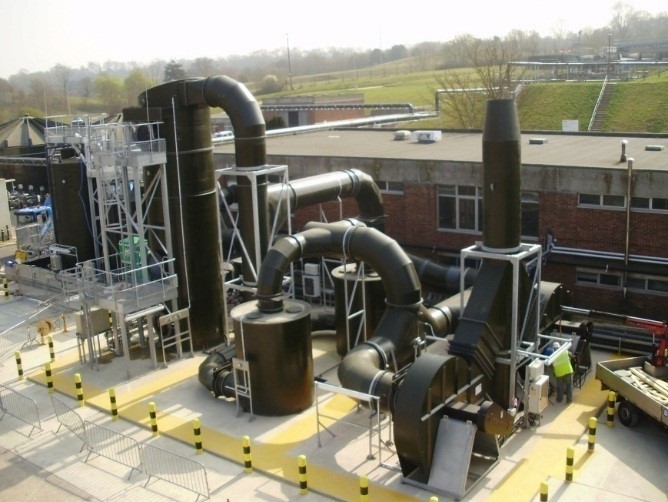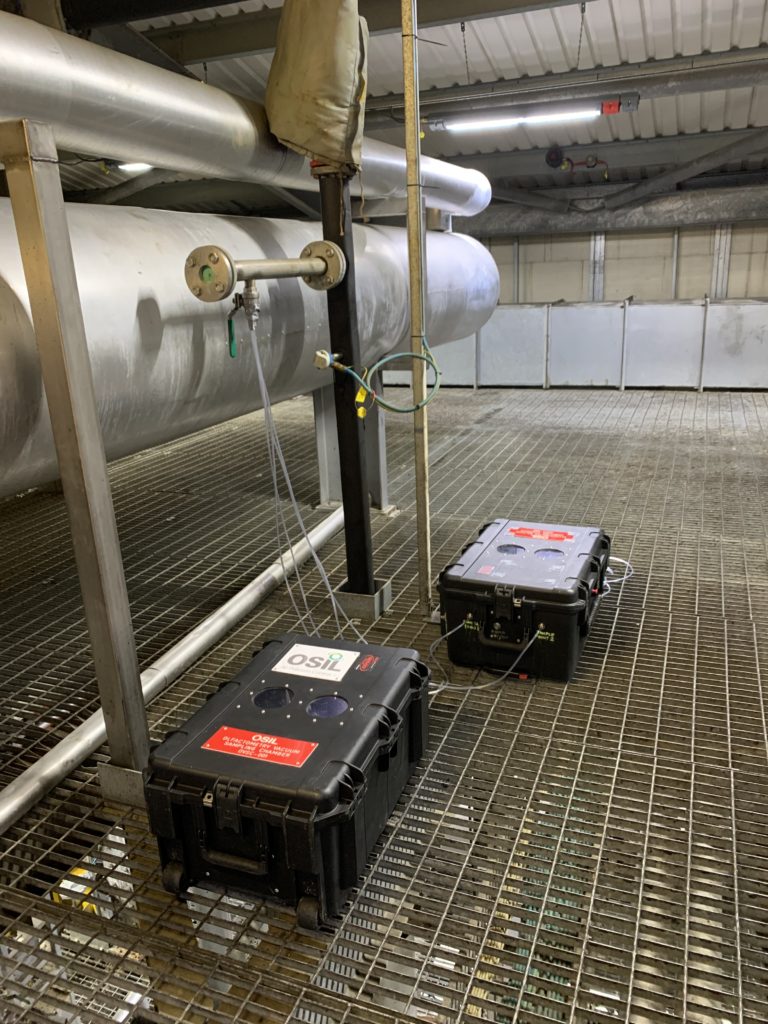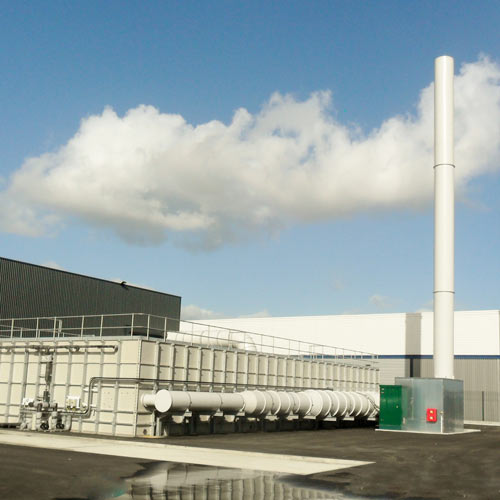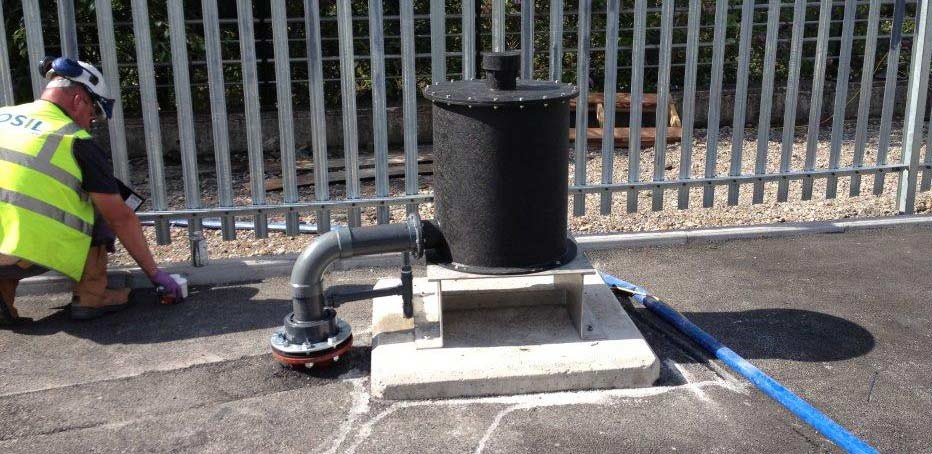Organic waste facilities produce a variety of foul odours, with gaseous ammonia (NH3) and hydrogen sulphide (H2S) being the biggest culprits.
Potential sources of odour in organic waste facilities include:
- Composting activities
- Foul surface water
- Residual wastes for landfill
- Storage prior to processing
Odour management for organic waste facilities involves reducing odorous gases that are produced from activities (e.g. with better aeration when composting), monitoring odours, and treating contaminated air so it can be vented safely.
At OSIL, we provide a range of odour management solutions that will help you reduce, control and manage odours in your organic waste facility. We will work closely with you to specify odour management solutions that are fit for purpose.
Odour monitoring, sampling and analysis
Odour monitoring involves detecting and measuring key odour-generating compounds and observing changes that may occur over time. It should form part of your odour management plan in order to assess the following areas:
- How effective your operational practices are
- The nature of odours and the extent of problems if they arise
The methods used to measure odours are determined by the odour source. This can be an area source (e.g. storage areas, composting zones) or a point source (e.g. a stack or a vent). It’s important to measure odours at all sources.
There are several techniques we can use to monitor odours:
- Olfactometry
- Data loggers
- Gas Chromatography Mass Spectrometry
You may also choose to perform your own activities in the following areas:
- Complaints monitoring
- Odour diaries (when necessary)
Using on site data loggers to detect and measure odorous compounds, Olfactometry, and data collected from samples processed using Gas Chromatography Mass Spectrometry (GC/MS), we can build a complete picture of your organic waste facility’s odours, so that we can specify the correct odour control solutions.
You can find out more about how odour monitoring, sampling and analysis works here.
Odour removal
Scrubbing will be necessary to reduce odorous compounds in air gas streams so that contaminated air can be safely released into the atmosphere. We offer a wide range of odour removal solutions to suit your needs.
In organic waste facilities, biological systems are extremely effective for odour removal because odours are forced through a packed media bed colonised by microorganisms. The microorganisms degrade organic odours with excellent efficiency.
Our LavaRok® systems use pumice stone as the support material on which the micro-organisms grow and establish a viable biomass. Pumice is a modern alternative to woodchip and shells with a lifespan of around 25 years.
Passive filters and tube vents can be used for vent gases. These use activated carbon or impregnated media to absorb H2S and NH3. The filters are disposable/refillable, and we offer a fast turnaround activated carbon resupply service.
In organic waste facilities, we typically specify passive filters for storage and waste holding tanks and pump sumps under positive pressure.
Another option is OdaCompact, a space-saving single tower that offers a two-stage treatment, combining LavaRok® biofiltration with CuCarb® Dry Media Systems. This solution is ideal for organic waste facilities that have limited space.
We also offer standardised capital equipment, including Containerised Hi-Flow CuCarb® Odour Control Units, which can be purchased on finance. These filter organic gases with a pre-configured design. Choose a lease or hire to suit your business’s needs.
Find out more
To discuss odour management solutions for your organic waste facility, call us on (0) 1543 506855 to have a chat with our experts.




